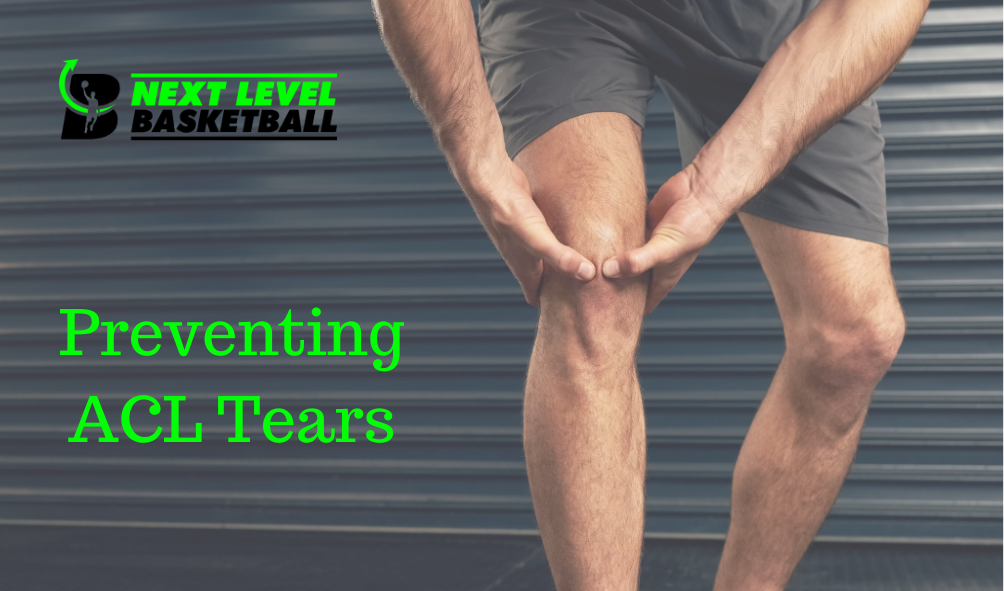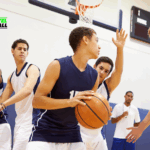5 Effective Tips to Safeguard Your Knees from ACL Tears
Are you a sports enthusiast looking to protect your knees from ACL tears? In this article, we will share five highly effective tips to safeguard your knees and prevent these painful injuries especially when playing basketball.
ACL tears are one of the most common knee injuries among athletes, especially in sports that involve sudden stops, pivoting, and jumping. Recovery from an ACL tear can be a long and arduous process, often requiring surgery and extensive rehabilitation. But fear not! By following these practical tips, you can significantly reduce the risk of ACL tears and keep your knees strong and injury-free.
From proper warm-up exercises to strengthening exercises targeting the muscles around your knees, we’ve got you covered. We will also discuss the importance of using proper footwear, avoiding risky movements, and how maintaining a healthy body weight can make a world of difference in preventing ACL tears.
Don’t let ACL tears put a damper on your sports activities. Stay in the game with these five effective tips to protect your knees!
Understanding ACL tears
The Anterior Cruciate Ligament (ACL) is one of the key ligaments in the knee joint, responsible for stabilizing the knee and preventing excessive forward movement of the tibia (shin bone) in relation to the femur (thigh bone). ACL tears are among the most common knee injuries, often occurring during sudden changes in direction, sudden stops, or landing from a jump.
These injuries can range in severity from a partial tear to a complete tear, with the latter often requiring surgical intervention and extensive rehabilitation. ACL tears can be debilitating, leading to instability, pain, swelling, and reduced range of motion in the affected knee. Without proper treatment and rehabilitation, ACL tears can increase the risk of long-term complications, such as osteoarthritis and chronic knee instability.
Understanding the anatomy and function of the ACL is crucial in developing effective strategies for the prevention and management of these injuries. By recognizing the common causes and risk factors associated with ACL tears, individuals can take proactive steps to safeguard their knee health and maintain an active, injury-free lifestyle.
Importance of knee health
The knee joint is a complex and crucial component of the human body, responsible for facilitating a wide range of movements and supporting the weight of the upper body during various physical activities. Maintaining optimal knee health is essential for individuals who lead an active lifestyle, as the knees are subjected to significant stress and strain during sports, exercise, and daily activities.
Healthy knees are not only important for physical performance but also for overall quality of life. Knee injuries, such as ACL tears, can have a profound impact on an individual’s mobility, independence, and ability to participate in their favorite activities. These injuries can be particularly debilitating, often requiring extensive rehabilitation and, in some cases, surgical intervention.
By prioritizing knee health, individuals can reduce the risk of injury, maintain their physical capabilities, and enjoy a more active and fulfilling lifestyle. Preventive measures, such as strengthening exercises, proper warm-up and cool-down routines, and the use of appropriate protective equipment, can go a long way in safeguarding the knees and promoting long-term joint health.
Common causes of ACL tears
ACL tears can occur due to a variety of factors, both intrinsic and extrinsic. Understanding the common causes of these injuries is crucial in developing effective prevention strategies.
One of the primary causes of ACL tears is sudden changes in direction, such as those experienced in sports like basketball, soccer, and football. Sudden stops, rapid deceleration, and abrupt pivoting can place significant stress on the ACL, leading to a tear. Additionally, landing from a jump with poor form or excessive force can also contribute to ACL injuries.
Anatomical factors, such as the alignment and stability of the knee joint, can also play a role in ACL tear risk. Individuals with certain structural abnormalities, such as increased knee valgus (inward knee position) or reduced knee flexion, may be more prone to these injuries. Muscle imbalances, particularly between the quadriceps and hamstrings, can also increase the risk of ACL tears, as the quadriceps can exert excessive force on the ACL during certain movements.
Tips for preventing ACL tears
Preventing ACL tears requires a multifaceted approach that addresses both physical and behavioral factors. By implementing the following tips, individuals can significantly reduce their risk of these debilitating knee injuries:
Strengthening exercises for knee stability
Incorporating targeted strengthening exercises into your fitness routine is a crucial step in preventing ACL tears. Exercises that focus on building strength and stability in the muscles surrounding the knee joint, such as the quadriceps, hamstrings, and calf muscles, can help to support the ACL and reduce the risk of injury.
Some effective exercises for knee stability include squats, lunges, leg presses, and hamstring curls. It’s important to perform these exercises with proper form and gradually increase the intensity and resistance over time. Additionally, incorporating balance and proprioception exercises, such as single-leg stands and balance board exercises, can help to improve overall knee stability and reduce the risk of ACL tears.
Regular strength training, coupled with a well-rounded fitness program, can help to build a strong, resilient knee joint that is better equipped to withstand the demands of physical activity.
Proper warm-up and cool-down routines
Implementing a comprehensive warm-up and cool-down routine is another essential component of preventing ACL tears. Proper warm-up exercises help to increase blood flow, raise body temperature, and prepare the muscles and joints for the demands of physical activity. This can include a combination of light cardiovascular exercises, dynamic stretching, and sport-specific drills.
After the activity, a cool-down routine is equally important. This helps to gradually reduce heart rate, lower body temperature, and facilitate the recovery process. Cool-down exercises, such as static stretching and light aerobic activities, can help to reduce muscle soreness, improve flexibility, and promote overall joint health.
By taking the time to thoroughly warm up and cool down, individuals can better prepare their bodies for the physical demands of their chosen activities, reducing the risk of ACL tears and other knee injuries.
Choosing the right footwear for knee support
The type of footwear worn during physical activity can have a significant impact on knee health and the risk of ACL tears. Proper athletic shoes that provide adequate support, cushioning, and stability can help to reduce the stress placed on the knee joint.
When selecting footwear, it’s important to consider factors such as the specific sport or activity, the terrain, and the individual’s biomechanics. For example, shoes designed for high-impact sports like basketball or soccer may feature more lateral support to help stabilize the knee during sudden changes in direction. In contrast, shoes for running may prioritize cushioning and shock absorption to minimize the impact on the knees.
It’s also important to replace worn-out shoes regularly, as the loss of support and cushioning can increase the risk of knee injuries. By choosing the right footwear and maintaining it in good condition, individuals can provide their knees with the necessary support and protection during physical activity.
Avoiding high-impact activities and risky movements
While regular physical activity is essential for overall health, certain high-impact activities and risky movements can increase the risk of ACL tears. It’s important to be mindful of the demands of the activities you engage in and make adjustments to your routine as needed.
Activities that involve sudden stops, rapid changes in direction, and high-impact landings, such as basketball, soccer, and volleyball, can place significant stress on the ACL. Individuals who participate in these sports may benefit from incorporating cross-training exercises that focus on low-impact activities, such as swimming, cycling, or elliptical training, to reduce the overall stress on the knee joint.
Additionally, it’s important to avoid movements that can increase the risk of ACL tears, such as excessive knee valgus (inward knee position) during landing or sudden deceleration. Proper technique and form during physical activity can go a long way in protecting the knee joint and reducing the risk of injury.
Maintaining a healthy weight for reduced knee stress
Maintaining a healthy body weight is another important factor in preventing ACL tears and promoting overall knee health. Excess body weight can increase the stress and strain on the knee joint, contributing to the risk of injury.
Individuals who are overweight or obese may experience higher levels of joint pain, inflammation, and reduced mobility, all of which can increase the likelihood of ACL tears. By maintaining a healthy weight through a balanced diet and regular exercise, individuals can help to reduce the overall stress on their knees, improving joint stability and reducing the risk of injury.
In addition to weight management, adopting a healthy lifestyle that includes a nutritious diet, regular physical activity, and proper hydration can also contribute to improved knee health and a reduced risk of ACL tears.
Conclusion
Protecting your knees from ACL tears is essential for maintaining an active, injury-free lifestyle. By implementing the five effective tips outlined in this article, you can significantly reduce your risk of these debilitating knee injuries and enjoy the activities you love without fear of setbacks.
Remember, a comprehensive approach that includes strengthening exercises, proper warm-up and cool-down routines, choosing the right footwear, avoiding high-impact activities and risky movements, and maintaining a healthy weight can all contribute to the long-term health and stability of your knee joints.
Don’t let ACL tears sideline you from the activities you enjoy. Prioritize your knee health, follow these practical tips, and stay in the game for years to come. Get proper training from the professionals at Next Level Basketball. Call 954-621-8470 to book your first session.





